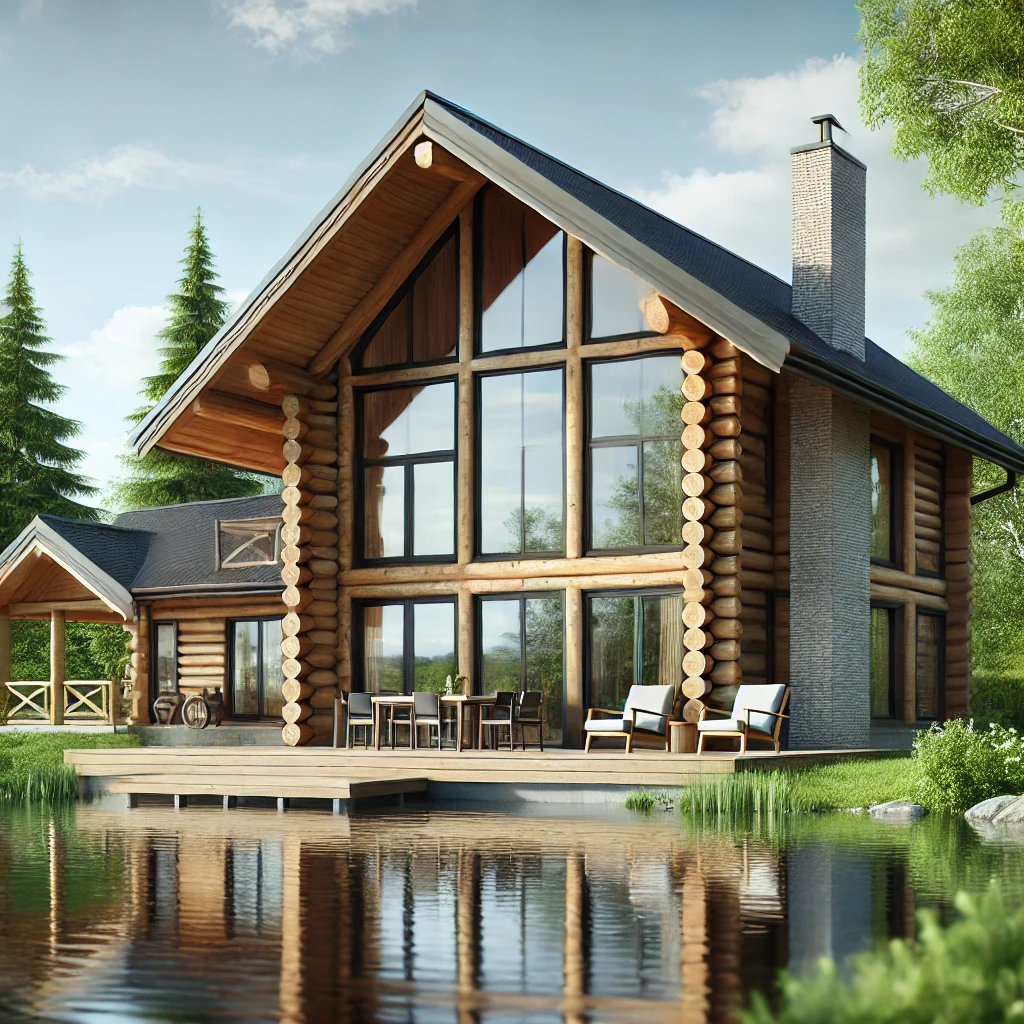
Do You Need Planning Permission for a Log Cabin in Ireland?
Do You Need Planning Permission for a Log Cabin in Ireland?
The dream of owning a log cabin in Ireland, whether for residential purposes or as a holiday home, is becoming increasingly popular. The allure of a rustic cabin surrounded by nature, often set in the scenic Irish countryside, is hard to resist. However, before embarking on the exciting journey of building or placing a log cabin on your land, it’s crucial to understand the legal requirements, especially in relation to planning permission.
In Ireland, planning laws are in place to regulate the construction and use of buildings. While the relaxed and natural image of a log cabin might suggest that it’s a simple structure to put up, there are specific rules and regulations to follow. This article will guide you through the planning permission process, helping you understand when it’s required and what exceptions exist.
1. Understanding Planning Permission in Ireland
Planning permission is required in Ireland for most types of construction. The permission process ensures that buildings and structures are safe, aesthetically appropriate, and in line with local zoning regulations. Whether you’re constructing a home, an extension, or an outbuilding, planning permission may be necessary.
This permission is granted by your local authority and depends on the specific area, zoning, and use of the land where you intend to build. The same applies to log cabins, but there are certain exceptions and considerations to keep in mind.
2. Is Planning Permission Required for a Log Cabin?
In most cases, yes, you will need planning permission to build or place a log cabin in Ireland. The need for permission depends on several factors, including the size of the cabin, its intended use, and where it’s located on your property.
If the log cabin is intended for residential use or as a holiday home, you will almost certainly need planning permission. The local council will review the application to ensure the cabin meets the necessary building codes and fits with the surrounding environment.
3. Exemptions to Planning Permission
While planning permission is typically required, there are some exemptions to the rule. These exemptions are outlined in the Planning and Development Regulations 2001, and they apply to certain types of buildings or structures.
For example, a log cabin may not require planning permission if it is considered a “temporary structure” and is not used for residential purposes. This might apply to garden sheds, summer houses, or other structures used for recreational purposes.
In addition, there are guidelines for small buildings used as ancillary structures on larger properties. If the cabin is small, set back from boundaries, and does not involve significant alterations to the land, you might not need planning permission, but this depends on the specific local regulations.
4. Factors Affecting the Need for Planning Permission
Several factors will determine whether or not planning permission is necessary for your log cabin. These include:
-
Size of the Cabin: Larger cabins generally require planning permission, while smaller structures (under a certain size) may not. In general, cabins over 25 square meters or those that are designed to be used for residential purposes usually require permission.
-
Intended Use: If your cabin is going to be used as a living space (e.g., a home or rental property), planning permission is nearly always required. If it’s simply for storage, a home office, or recreational use, the regulations may be different, but it’s always best to consult with your local authority.
-
Location: The location of your log cabin plays a significant role in whether you need planning permission. If the cabin is being built in a rural area or part of a protected landscape, more stringent rules may apply. Urban areas may also have specific zoning laws that prohibit certain types of structures.
-
Site Development: Any significant changes to the land, such as new access roads, drainage systems, or utilities, may require planning permission. Additionally, if your cabin impacts your neighbors in any way (e.g., blocking views, increasing traffic), planning permission will likely be needed.
5. The Application Process for Planning Permission
If your log cabin does require planning permission, the application process is relatively straightforward. Here are the key steps involved:
-
Pre-Application Consultation: It’s advisable to contact your local authority’s planning department before submitting an application. This allows you to clarify any specific requirements, zoning rules, or restrictions that apply to your property.
-
Prepare the Application: You will need to submit a planning application to your local council. This typically includes a site plan, a description of the project, and any supporting documents such as design drawings. You may also need to provide details about the impact on local infrastructure, water supply, and other factors.
-
Public Notice: The planning application will often be advertised publicly, allowing neighbors and other interested parties to make submissions or objections. This is a standard procedure to ensure transparency and public participation in the planning process.
-
Decision: Once the application is reviewed, the council will either grant or refuse planning permission. They may impose conditions on the approval, such as restrictions on the size of the cabin, landscaping requirements, or stipulations regarding utilities.
-
Appeals: If your application is refused, you have the right to appeal the decision. The appeal process is handled by An Bord Pleanála, Ireland’s independent planning appeals board.
6. Planning Permission for a Log Cabin as a Holiday Home
If you are planning to build a log cabin to use as a holiday home or to rent out as a short-term rental, the regulations are generally more complex. In addition to typical planning permission, there may be specific zoning or land-use restrictions that apply. Many areas have been designated for specific uses (e.g., agricultural, residential, commercial), and if your log cabin does not fit within the designated use, permission may be refused.
Moreover, some counties in Ireland have introduced stricter regulations concerning short-term rental properties, requiring specific licenses or approvals in addition to planning permission. These regulations aim to ensure that the accommodation is safe for guests and that the local community is not negatively impacted by tourism.
7. Consequences of Building Without Planning Permission
Building a log cabin without the required planning permission can have serious consequences. If caught, you may be ordered to remove the structure or face fines. In some cases, the local council may even take legal action, leading to costly court proceedings.
If you decide to proceed without planning permission, you risk facing significant financial losses and potentially harming the value of your property. Furthermore, if the cabin is discovered after it has been completed, you may be required to make extensive modifications to bring the cabin into compliance with regulations.
Conclusion: Consult Before You Build
In conclusion, planning permission is generally required for building a log cabin in Ireland, especially if it is intended for residential use or placed on land where specific zoning laws apply. While there are certain exemptions, the safest course of action is to consult with your local planning authority before starting any construction project.
By understanding the regulations and obtaining the necessary permissions, you can ensure that your log cabin is legally sound, safe, and aligned with local planning laws. Taking the time to go through the proper channels will save you time, money, and stress down the line, allowing you to enjoy your cabin retreat without worry.
